|
In January, I attended the Routes To Farm Summit—a two-day forum of peer-to-peer discussions among small to medium scale food producers. Instead of presentations and workshops, the participants determined the discussion topics for this Open Space meeting. The first discussion I joined focused on greenwashing—the deceptive marketing used to make a product appear more local, healthy, environmentally friendly, or socially responsible than it really is.
It’s easy to find examples of corporate greenwashing, such as Volkswagen’s diesel emissions scandal and Monsanto’s environmental PR campaigns versus their effort to cover up findings that glyphosate, Round-Up’s key ingredient, causes cancer. Our discussion opened my eyes to back-yard greenwashing. Vegetable farmers in northern Illinois talked about CSAs that aggregated vegetables from outside the region but market them as locally* grown. A Wisconsin farmer described seeing her farm’s name promoted as the restaurant’s vegetable source. “We hadn’t sold anything to them in months,” she explained. Not only were they using the farm’s name without buying her products, if the restaurant used an inferior product, it would reflect poorly on her and her farm. I realized that I had examples from my own experience, though I hadn’t thought of them as greenwashing at the time. Before I started raising pigs, I called well-known pastured pork farms to get a sense of what feed rations and pasturing practices worked best for them. “We grow corn and soybeans here on the farm,” one woman replied in a chirrupy voice. “It’s all non-GMO,” she added, with the Wisconsin emphasis on the “O”. “Well, we plant non-GMO,” she acknowledged. “I can’t guarantee that the feed is non-GMO. You know how it is.” I do know. Corn pollen can travel for miles and pollinate any other field of corn that’s at the same growth stage and thus receptive to pollination. To avoid GMO contamination, organic corn farmers plant ten to fourteen days after their neighbors have planted. That way, the conventional corn has stopped shedding pollen when the organic corn begins pollinating. Non-GMO corn requires the same precautions to produce non-GMO seed. Consumers look for non-GMO products because they want to avoid GMO foods. The farm’s website says Non-GMO feed. Is their lack of detailed explanation about their feed a communication oversight or intentional greenwashing? Another example comes from some very loose interpretations of “pastured pork”. There’s not an enforced definition of pasture when it comes to raising pigs. I’ve visited a few pastured pork farms where the pigs live in a dirt lot that started out as a pasture. It’s far better than raising animals in a confinement building, but calling a dirt lot a pasture is greenwashing. Here's my preferred definition of pastured, adapted from the National Organic Program (NOP) Rules: Within the climate’s grazing season, pastured animals must have constant access to fresh, green forage that they consume by breaking it off from living plants whose roots are still in the ground. If animals can't do that in their living space, then they aren't pastured. What can a consumer do? Our discussion group at Routes To Farm concluded that journalists and watchdog organizations could not be expected to regularly investigate and expose backyard greenwashing. The most powerful check against greenwashing is you—the informed consumer. There are four steps you can take to ensure you are getting the food you want: know your farmer, ask questions, consider the price, and see for yourself. 1. Know your Farmer. If you buy directly from the farmer, you have a pretty good idea where your food is coming from. Admittedly, knowing the farmer doesn’t necessarily guarantee truth in advertising, but it eliminates the middlemen who While the farmers in the local greenwashing examples above weren’t transparent on their websites, they were open with me when I asked questions. Knowing your farmer gives you the direct communication that you cannot get through a grocery story or food company. 2. Ask questions. Nothing beats the back-and-forth and body language of face-to-face communication (See step 1). It’s much easier to get direct answers when the person selling the product is the same one who grew it. Some example questions: Who certifies you? (If the product is certified). Do you use herbicides or pesticides in your pastures? What about in the grains you grow or buy to feed your animals? How can you guarantee that your animals’ feed is GMO-free? Is this 100% grass fed beef? Your product says natural. How do you define natural? How do you deal with: cucumber beetles, ragweed, pink-eye, predators, etc? Do you source any of your products from other farms? How the farmer answers can tell you as much as the answer itself. Did she give you a vague response or a enthusiastic explanation that shows how much she believes in what she does? Asking questions is the first step to holding farmers and other business owners accountable. When a friend of ours asked if I could guarantee that my pigs were slaughtered humanely, I decided to tour the processing plant so I could give her an honest, detailed answer. If you decide not to buy something based on the farmer’s answers, you have empowered yourself as an informed consumer, and you are holding the farmer economically accountable for his answers, if not his actions. 3. Consider the price. It’s not hard to grow high-quality food for yourself. It’s much harder to do it profitably as a business. If something is touted as healthy, organic, pastured, etc is priced like industrial food, it was probably raised more like industrial food. There are few shortcuts to quality. 4. See for yourself. Ask if you can visit the farm. Don’t expect the farm to have a drop-by-any-time policy. Farmers have a business to run with schedules (farmers’ markets), deadlines (trying to beat the weather), and family commitments (kids’ soccer) like everyone else. You at least want to know if the farm is open to any visits. As a chef told me, “When a farmer hems and haws about a site visit, I start to wonder what he’s hiding.” Visits take time for the farmer and the consumer, but it can be a win-win outcome. Half of my customers from 2016 came out to see the pigs on pasture. Those customers are some of my most enthusiastic supporters. Visits also allow you to see the farm in its larger context and notice things that might not appear in promotional text and photos, like the feedlot for “grass fed” cattle. (Full disclosure: I avoid taking pictures that capture the full immensity of the all-brown, metal sided structure that the previous owners built for horses. Come out to visit if you want to see pigs on pasture with a back-drop of what the Death-Star would look like as a 1970s pole-building.) There’s no particular order to these steps. You may visit a farm at an open house and ask questions, the steps that lead to knowing your farmer. However you follow the steps, I hope you become an empowered consumer who can see through the greenwashing. *The USDA defines local as four hundred miles—farther than the distance from Indianapolis to Iowa City. Under that definition, the CSA could have been selling local produce, but when was the last time you crossed two state lines to get groceries?
0 Comments
I seeded another acre of cornstalks with a cover crop mix yesterday, walking up and down rows with a hand cranked seeder. I did the same thing on an acre last month. By the end of April, I should see the beginnings of oats, medium red clover, sweet clover, perennial ryegrass, and kernza. Over time, this combination will fix nitrogen, sequester carbon, and create an environment for microbial soil life to flourish, all while giving the pigs something to graze.
Most farmers and gardeners till the previous crop under before planting the next crop. This is especially true of the long, almost woody stalks left over after corn harvest. No matter what the tool they use—disk, plow, tiller—or the size, working cornstalks in requires horsepower. Unless it comes from an actual horse, horsepower burns fossil fuel. I try to limit my fossil fuel use on the farm, and since I don’t have a tractor, I’d like to avoid tilling two acres of cornstalks under with a 30-inch tiller. But there are even better reasons to avoid tilling the stalks. Tillage, while necessary at times, works against nature. Most soil organisms live in the first four inches of the surface. One teaspoon of good soil can contain one billion invisible bacteria, several yards of fungal hyphae, a few thousand protozoa, and dozens of nematodes.* Tillage tears through these dense microbial communities like a tornado through a trailer park, shredding fungal hyphae while ripping earthworms and arthropods from their homes and crushing them. The regular tillage in conventional gardening and farming, along with salt-based fertilizers and toxic herbicides, turns soil from the living means for growing plants into a dead medium that holds the roots of chemically dependent monocultures. If destroying the microorganisms’ home isn’t bad enough, tilling corn stalks under also throws their food system out of balance. Soil microorganisms thrive with a diet of 24:1 Carbon to Nitrogen (C:N) ratio. If you have ever tried composting, you know that this is the ratio of dry material and grass clippings that makes a pile “hot” with microbial activity. Tilling cornstalks in overloads the soil with carbonaceous material at almost 60:1. Soil organisms then immobilize any excess nitrogen in order to break down the carbon, leaving any plant life starved for nitrogen. Tilling stalks under before planting makes nitrogen unavailable right when the farmer or gardener needs it. By seeding into standing cornstalks, I hope to get a green mat of cover crop growing up around them. By mid-summer, there will be far more nitrogen and microbial life in the soil. Then, when the pigs knock the stalks flat while grazing, the soil surface environment is optimized to begin decomposing that carbonaceous material. So how can just scattering seed over the ground work? It’s what nature does all the time. The trick is timing. By seeding now, several cycles of frost, thaw, rain, and sun will work most of the seeds into the soil surface where they will germinate and grow. I seeded an acre on the 27th of last month. In the photo below, which covers about 5 x 8 inches, you can see at least six tiny clover sprouts in a triangle pattern. That’s two acres of pasture sown without ever firing up an engine or turning a single handful of soil. I can’t think of an environmentally friendlier path to greener pastures. —Find A Way-- * From "Teaming With Microbes" by Jeff Lowenfels & Wayne Lewis (At Least In The Kitchen) Admit it. Sometimes you want all the benefits without any strings attached. You want pleasure without subsequent effort. You know who you are (and so do I). You don’t order ham. Ham epitomizes what we love about pork —the sweet, smoky character of cured meat, hugged in a savory layer of fat, revealing richer treasures of taste as you near the bone. Ham can take center stage in some of the best meals shared with family and friends. Ham often ranks behind bacon and some sausages for pure flavor reward, but when you cook the latter two, the joy ends with the meal. Just try to find a recipe for leftover bacon. Ham, on the other hand, is the cut that keeps on giving. When we cook a ham, we only eat part of it for dinner. Then I’ll carve stacks of slices, keeping some for immediate use and wrapping a few packs for the freezer. Then I cube some pieces to go in omelets and cube some more for Rigatoni Modo Mio (Pasta with cauliflower and ham) from Craig Claiborne’s The New York Times Cookbook. The odd cut offs get ground for ham salad.* The bone with some meat still on it goes into beans or lentils. It doesn't have to be immediate. It can all be frozen and used later. Either way, cooking a ham begins a short-term relationship that gives you a week’s worth of meals. But maybe you don’t want that. Enter the ham steak—a wonderful, half-inch cross-section of everything you love about ham. One steak serves two people or smaller portions for three or four. You get all the smoke-cured, bone-in deliciousness without the commitment to follow-on meal planning. It’s the one-night-stand of ham. Fry it, grill it, or heat it any old way to eat as is, or chop it up to put in omelets or pasta. Enjoy it. The next day, you can move on to another cut without any guilt. I have ham steaks. You can even substitute them for ham in the 25lb box. Order what you want. We all have different needs at different times. I promise I won’t judge you. * I learned this from the queen of the meat salad —my mom. In her kitchen, and now mine, the final leftovers of beef, pork, or chicken often go through a century-old hand-crank grinder with hard-boiled eggs. Then that gets mixed with mayo and relish. The trick is to get the mayonnaise ratio just right so the meat spread sticks to itself and stays in the sandwich. That way, you can eat one-handed while operating trucks and tractors. You steer with your left hand and hold the sandwich in your right between your thumb and first two fingers. That leaves your third and fourth fingers to work with the heel of your hand to operate the throttle, gear shift, and hydraulic levers. It's multi-tasking before the smart-phone age.
I mosly blog about what I do and my thinking behind those actions, leaving the rest of my life and family in the background. Though I work alone during the day—especially throughout the winter—the farm is a family affair.
Late last summer, we hired Jen Lucas, a Madison Documentary Photographer, to come out for a family photo shoot and capture us (mainly the kids) in our own environment instead of a studio. When she recently posted the montage --12# Watermelon— on her website, the (wonderfully-green-compared-to-now) photos reminded me of why I wanted to farm. Odyssey Farm is a business, but it’s also a lifestyle. Aside from me showering before dinner and the kids being cleaner (all for the family photos), it’s a pretty accurate reflection of how we live. Sarah and I get to work together. We can prepare entire meals from food we grow. The kids work and play alongside us. Hazel and Karsten have their own space in the garden to plant what they want. They do small chores and literally get to enjoy the fruits of their labor —the 12 lb watermelon in this case—as a reward for delayed gratification. You can’t buy that kind of satisfaction. Someone emailed me two weeks ago asking if I had any pork left. I figured she just hadn't looked at the website recently. I got another email this morning from another person looking for pastured pork and wondering if I had any. Despite all the web effort, I apparently suck at communicating basic ideas. Let me try again:
I'm Ryan. I raise delicious, acorn-finished pastured pork. Yes, I still have some in stock. See this page for details. We like the breakfast sausage we get from our processor, and we’ve had several compliments on it. Like so many things in life, though —especially in the world of food— the greatest flavor and satisfaction come from what you can do in your own kitchen. Our favorite breakfast sausage recipe comes from Charcuterie by Michael Ruhlman & Brian Polcyn (it’s also my go-to reference for curing and smoking meats).
Breakfast Sausage With Fresh Ginger And Sage: 5 Lbs Boneless pork shoulder 3 Tbs Kosher Salt (recipe written for Diamond Crystals Salt. Salt brands vary in salinity, so the brand makes a difference) 5 Tbs finely grated fresh ginger 5 Tbs tightly packed, finely chopped fresh sage (If you have dry sage, use a ratio of 1 part dry to 3 parts fresh. I used 1.5 Tbs of our own dried sage) 1 Tbs minced garlic 2 tsp ground black pepper 1 cup ice water A note about being a cool sausage maker: Keeping everything cold is one of the keys to making good sausage with that perfect texture of fat and meat. If the meat and fat get warm in the process, you get a mushy mess from softening fat. We notice the difference in texture when we cook sausage that got too warm while grinding. You need cold ingredients but also a cold grinder to do this well. We like to make sausage in winter for this reason. Our grinder is an attachment on the front of our stand mixer. (Don’t gasp, I own a hand cranked one too). Not only do we chill the meat, we set the mixer’s bowl and grinding attachment in the snow to keep them cold since grinding will build up some heat from the friction. For really large batches, I’ve pushed snow through the grinder every so often to keep it cold. 1. Combine all the ingredients except the water and toss to distribute the seasonings. Chill. 2. Grind the mixture through a small die into a bowl set in ice (their directions -an alternative to our technique of chilling the stainless mixing bowl in the snow) 3. Add water to the meat mixture and mix with the paddle attachment or a sturdy spoon until the liquid is incorporated and the mixture has developed a uniform, sticky appearance. 4. Saute a small piece of sausage to taste test. (Their next instruction goes into stuffing casings. We don’t bother. We measure out 1 lb increments and wrap them in butcher paper to store in the freezer.) When cooking, gently saute the sausage to an internal temperature of 150 degrees F. I make patties and cook them just to the point of browning while still yielding to the touch. It’s a hit with our kids and brunch guests. |
Ryan Erisman
Former Marine Infantry Officer. Iraq Vet. Interested in Regenerative Agriculture at any scale. Archives
February 2023
Categories |
Odyssey Farm, LLC.
The Odyssey Farm Journal
Odyssey Farm, LLC
|
Dane County Climate Champion
|
608.616.9786
|
Copyright © 2016
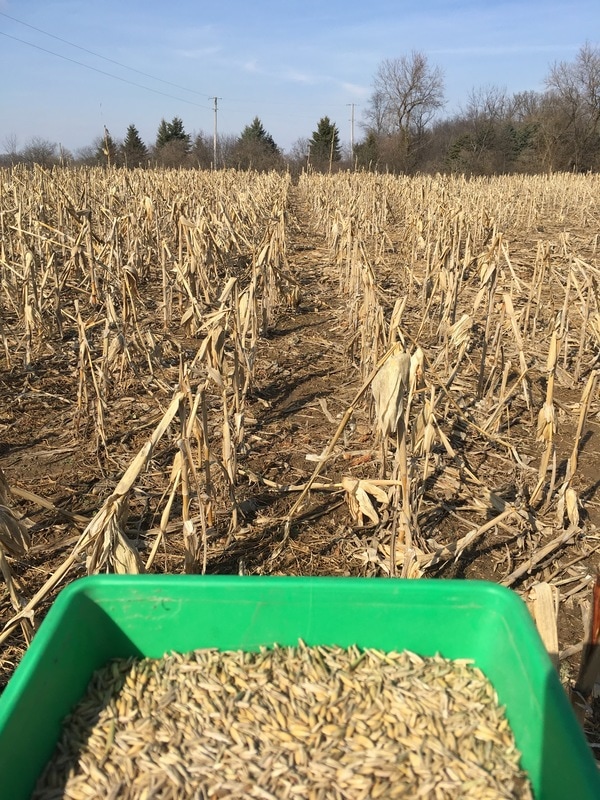
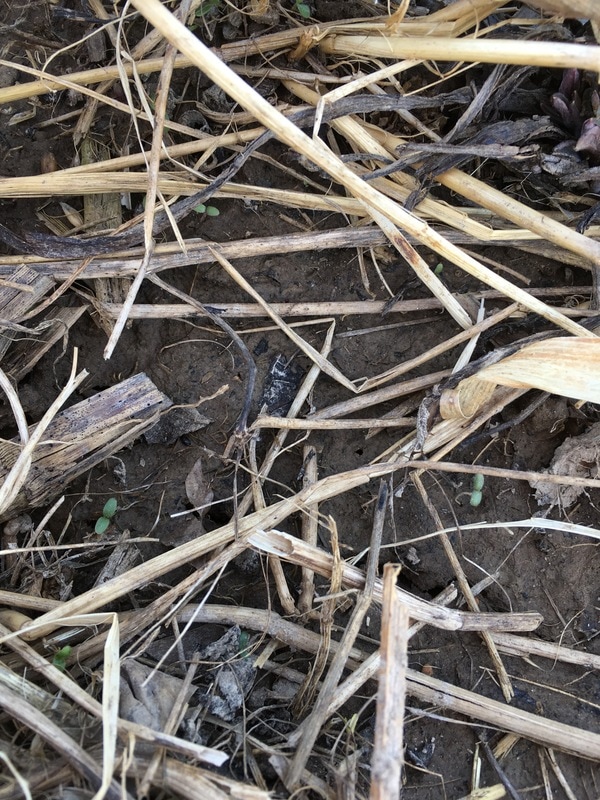
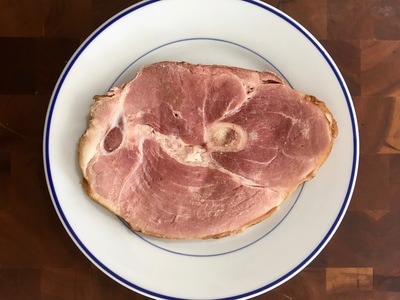
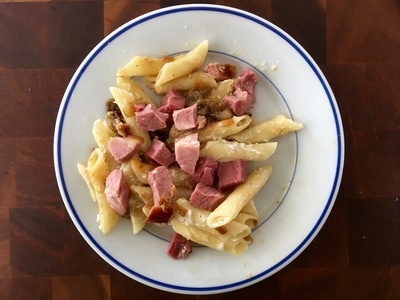
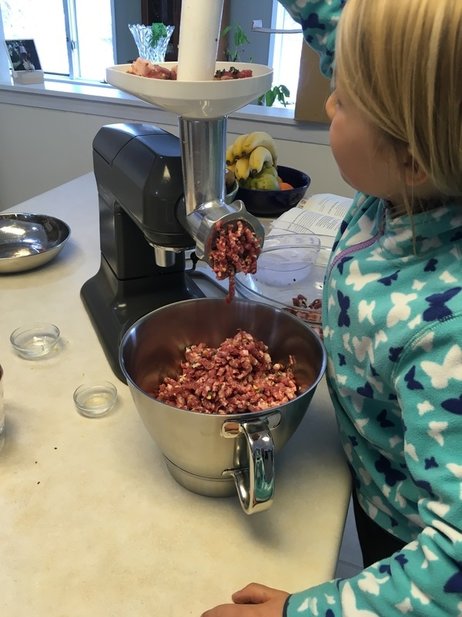
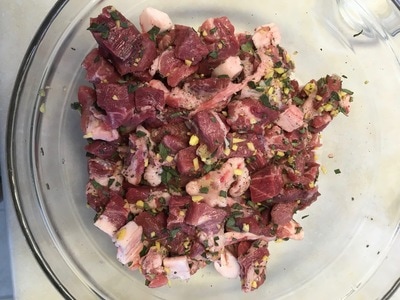
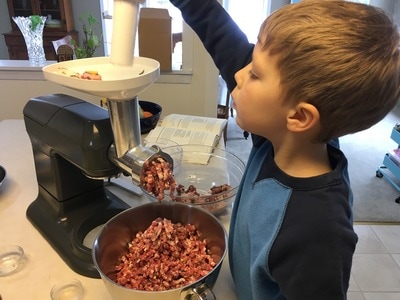
 RSS Feed
RSS Feed